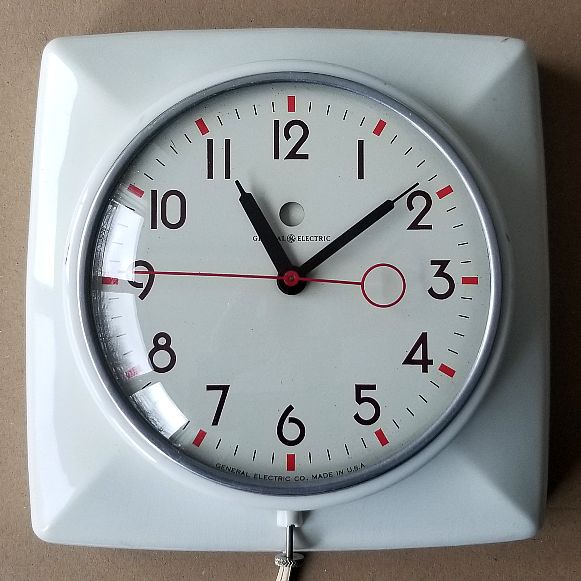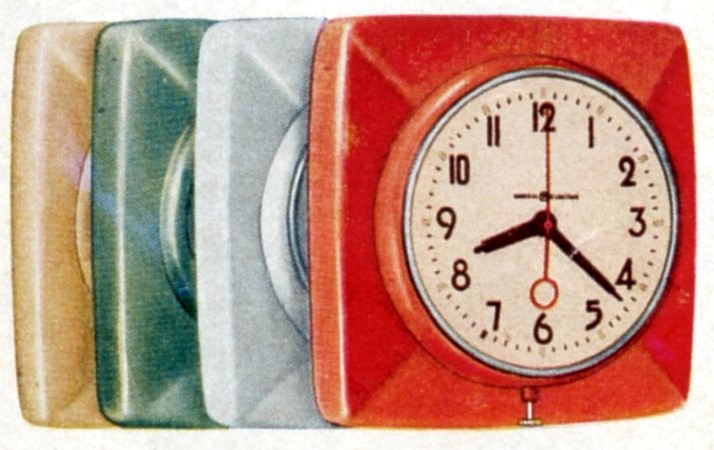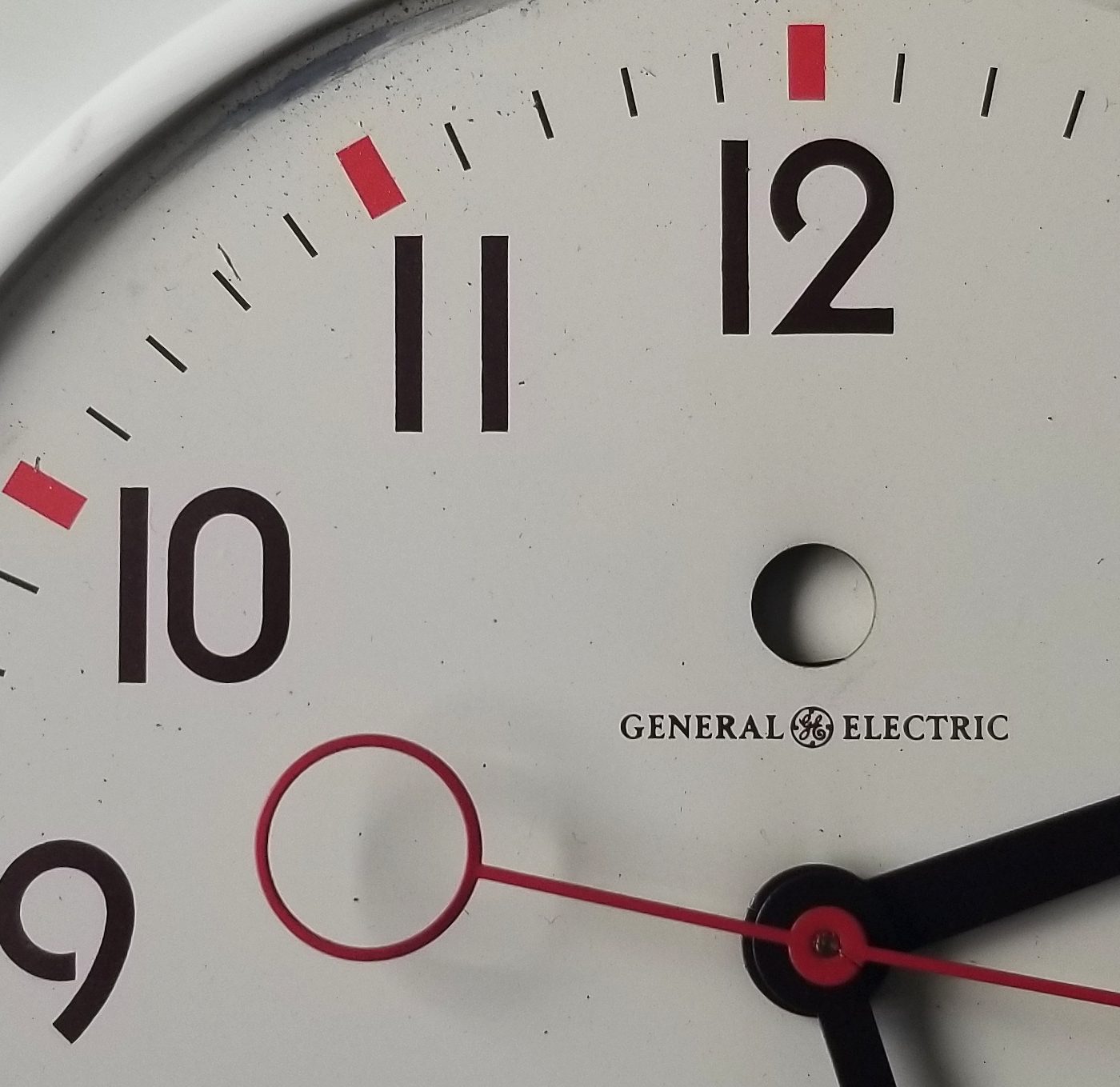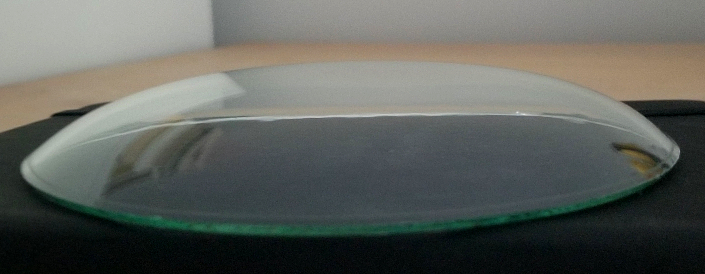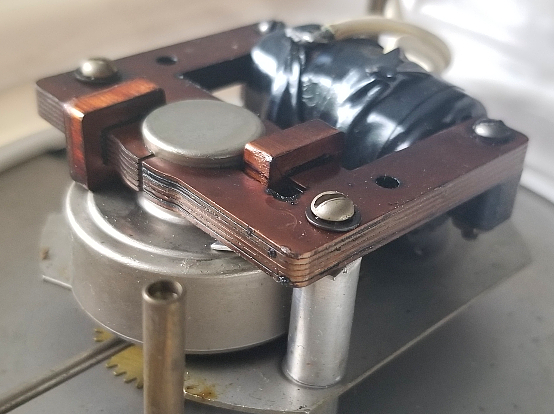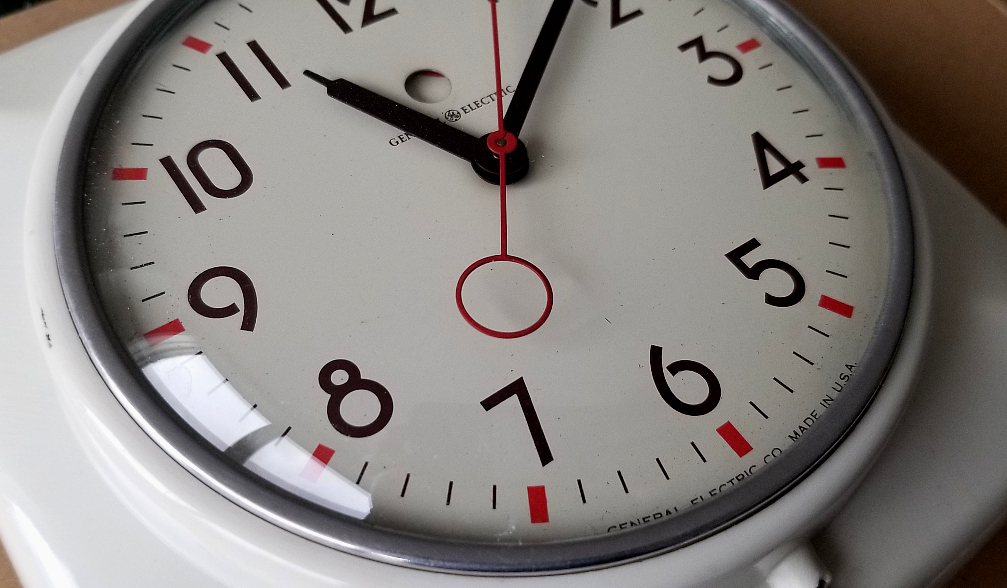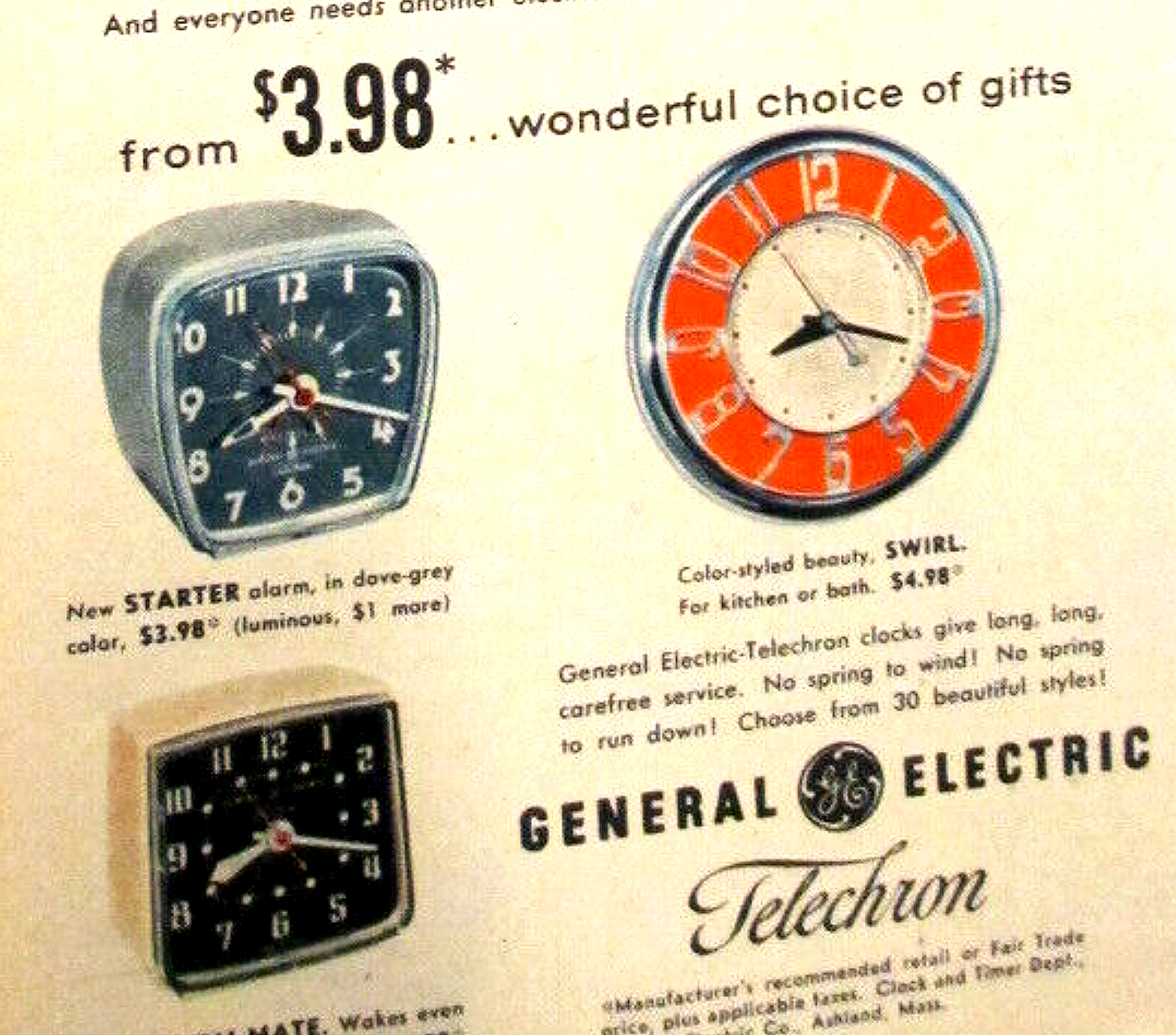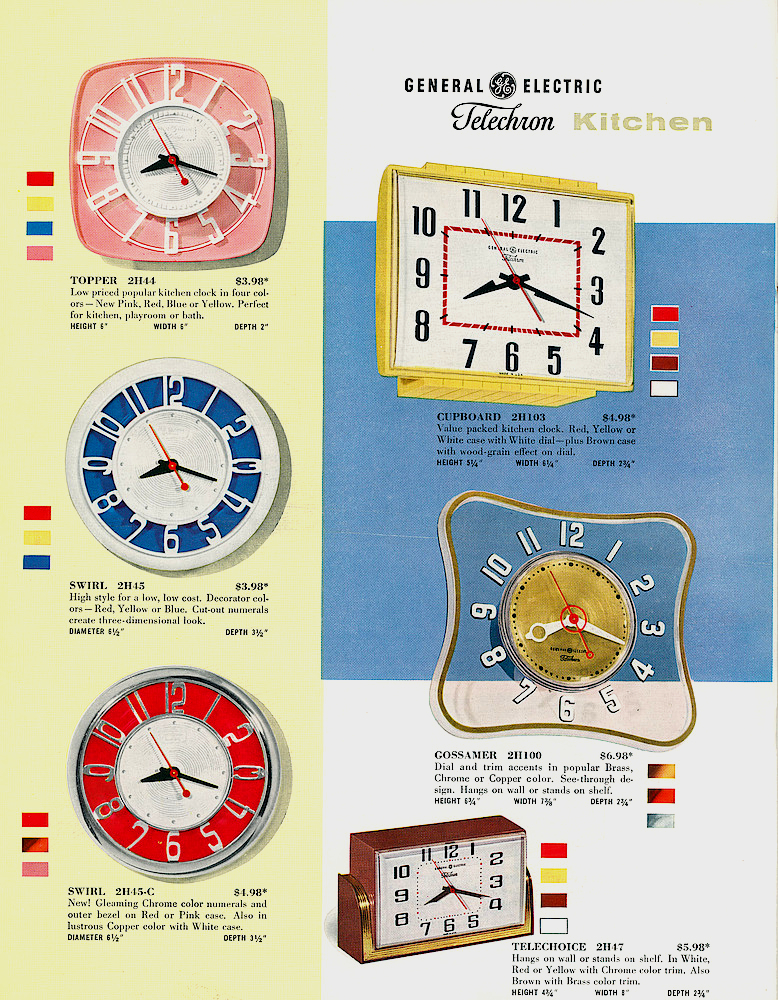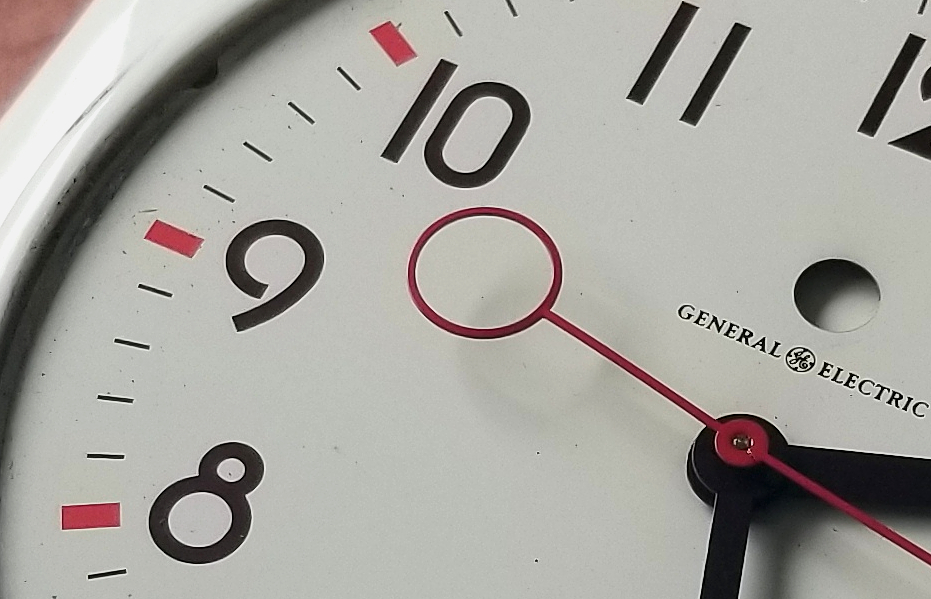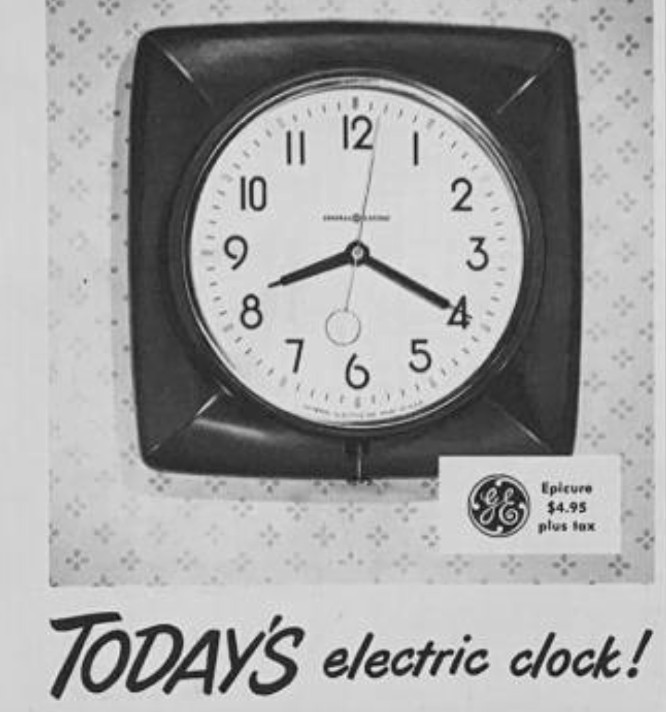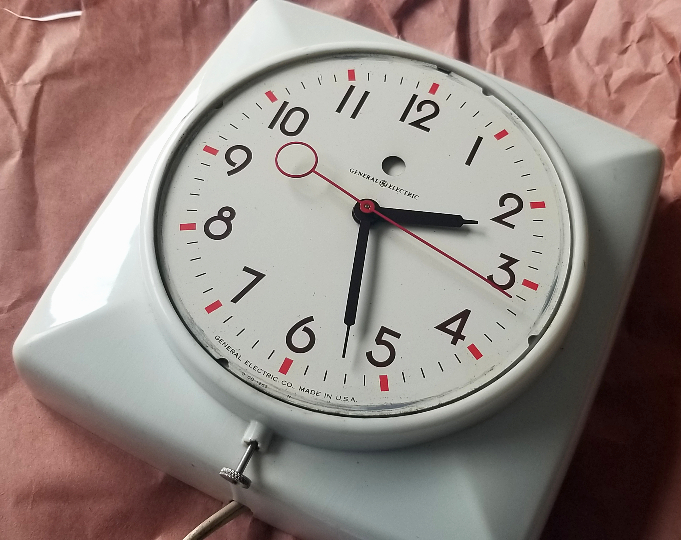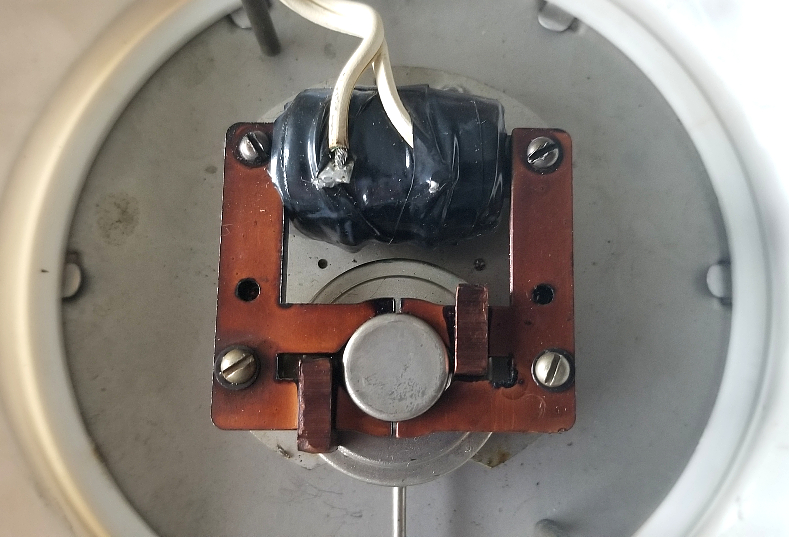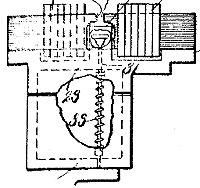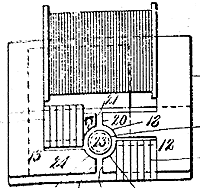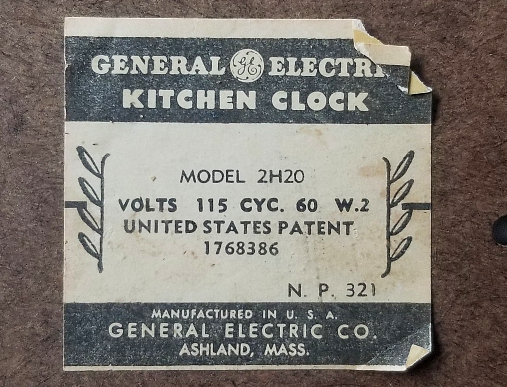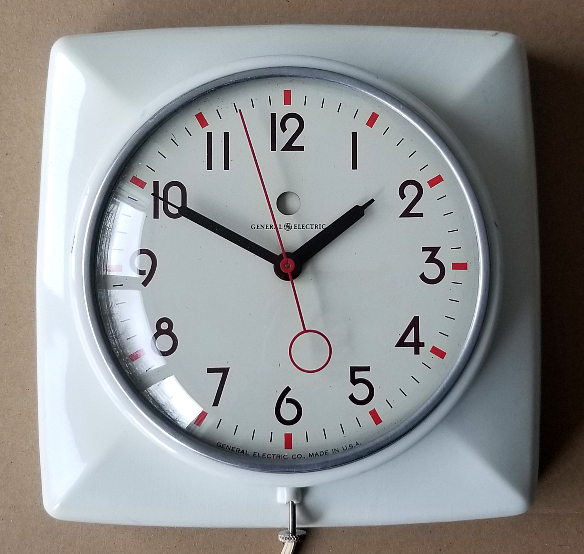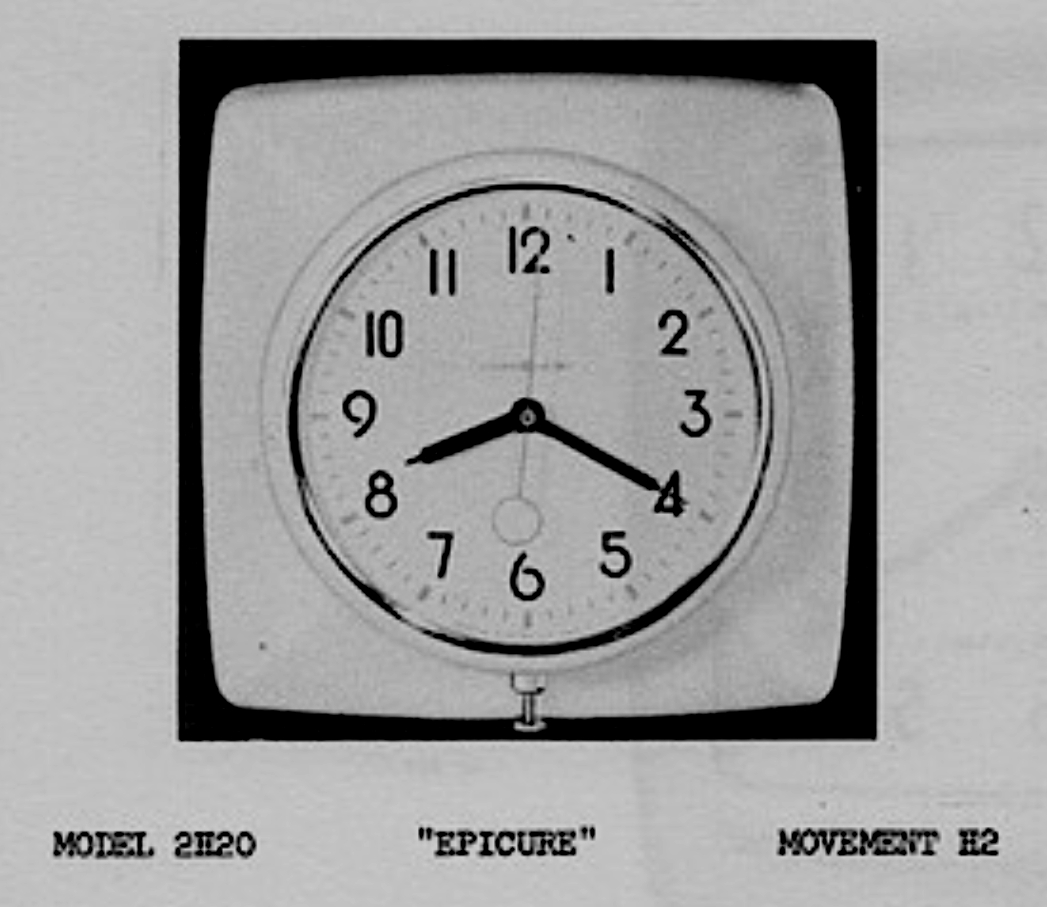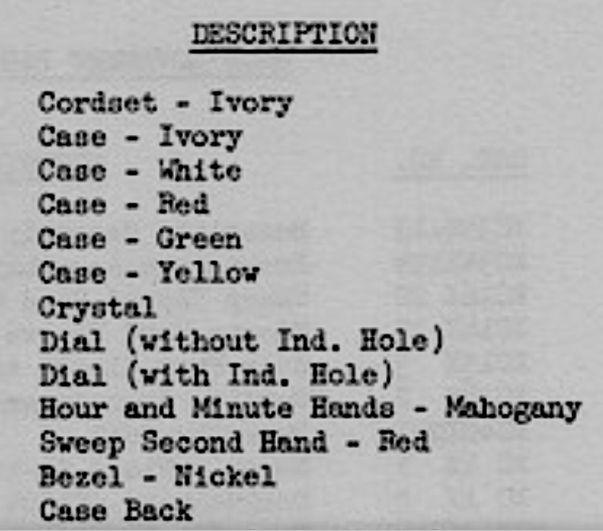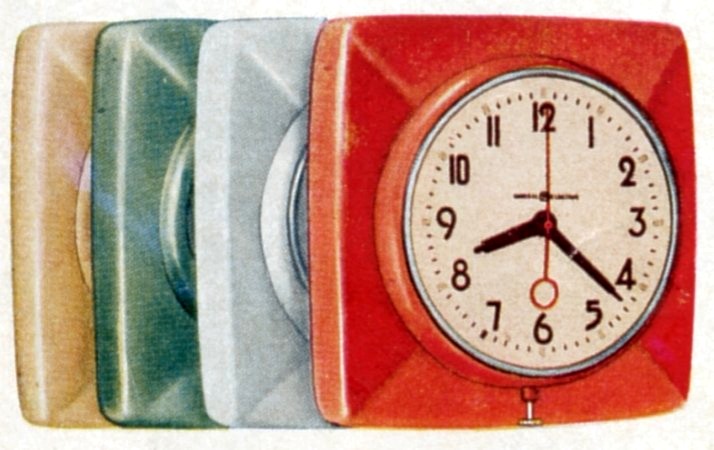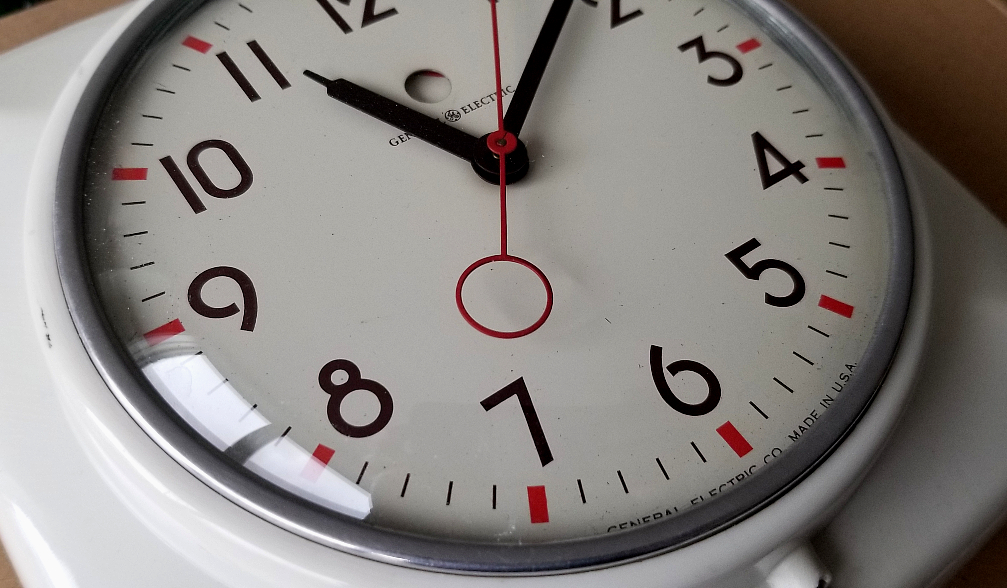1949 General Electric Kitchen Clock "Epicure" Model 2H20
.
Hi, this is Alan. Thanks for reading and for your interest in these reviews. My contact info is below.
While I'm primarily a fan of watches, I also have a particular fondness for these medium-sized midcentury electric "kitchen clocks." There were countless models, with various designs, generally bright, easily-readable, often with Art Deco and "machine age" aesthetic influences.
The Epicure clock -- named for "a person who takes particular pleasure in fine food and drink" -- had a molded plastic case, and came in four colors. Mine is the white one.
I had to take the clock apart in order to properly clean it, which allowed me to have a good look at the dial and hands. I'm not an art or architecture historian, but it all kind of strikes me as belonging loosely in the "International Style," sort of 1920s-1950s European, maybe with some features of a railway clock. The black hands are straight, maybe with a slight taper to the hour hand, with needle ends. The second hand is really pretty cool with a large open circle at the short end. Numeral type is modern, but with some whimsical flourishes. Look at the 8! The outer hash-marks have orangey-red rectangles every 5 minutes. Those colored rectangles add so much to the look of this clock.
Extreme close-up here, but I wanted to show some of the details. The General Electric logo/wordmark -- not really very modern -- fortunately isn't overpowering. That open circle above the logo, I'll discuss that below.
The watch was very hard to properly clean without taking it apart. In particular, there was grease that was deeply in the circular grooves between the metal bezel land the glass and case, no amount of wiping with a cloth or even probing with a Q-tip was able to clean it. Given this was made in 1949, I suspect there was bunch of old lard and bacon grease in there! But after opening it up, it looks really great, all the grease is gone. Here is the domed glass crystal after cleaning. No nicks or defects, but I was so scared of dropping it or otherwise damaging it during the process!
The case was hard to show really well in one photos, but it's white molded plastic, seems durable and is attractively-shaped.
The beauty of these clocks is not simply that they are electric and don't require winding, but that they run on the 60 Hz alternating current mains of your (North American) house, and function as synchronous electric clocks. These clocks keep time by the oscillations of the alternating current electricity that power them from the electric power grid. They do not contain a timekeeping oscillator such as a pendulum or balance wheel, but instead count the oscillations of the AC utility current from the wall plug to keep time.
Of course, they have a plug and cord that generally is visible (though if you wanted to go through the effort in your home -- the way they did in shops, offices, schools and many other places -- you could install a "clock outlet," a recess in the wall with an outlet, which is covered up by the clock, and where the cord gets hidden. Here is one.
The inventor of the synchronous electric clock called his company Telechron. At some point GE had a relationship with Telechron. Not sure if they licenced the name for use in ads and marketing, or if they actually acquired Telechron, but it seems pretty clear that that the internal components of the GE clocks were Telechron. The above as well as the below ad show GE and Telechron ad branding.
What about that circle above the GE logo? You can see that it's a cut-out in the dial, and underneath a white color. This is an indicator window that can alert you if there has been a power failure, in which case the clock will be off. I wish I knew the exact mechanism, but when the power goes out, a red flag moves across the opening of the window, so it shows red. Even when the power goes back on, the window stays red until you manually reset it. This way, if the power was out for 20 minutes while you were sleeping, as you are later having your morning ham, eggs, white toast, and coffee (this was 1949,) you will realize there is something wrong with your clock, and won't be 20 minutes late for work.
The window was working before I opened it up for cleaning it, but no longer! The window is always white now, but fortunately the timekeeping is still fine.
1949 ad for the Epicure. Notice this ad clock does not have the power-failure indicator (there were versions with and without).
Without the glass and bezel. Good look at the case.
The movement/motor. The shaft at the bottom is a long stem that come out through a hole in the case at 6 o'clock, for setting the time with a friction fitting.
Warren's drawings of the type A motor. It was first described and illustrated in US patent #1,283,431, applied for on Aug. 21, 1916 and granted Oct. 29, 1918
Paper label on the back. Made in Ashland, MA by GE. 115 volts 60Hz. Nowhere does it say Epicure, but you can see Model 2H20
From a parts catalog, Epicure, Movement H2, model 2H20
From the same parts catalog. Four case colors. Note the dial replacement comes with or without the indicator hole. I suspect the one with the indicator would cost more.
I find this GE clock to be really attractive and a good example of the confluence of art and design movements and influences that seemed to have sort of converged at the time into what people now call "Midcentury."
Of the handful of clocks I have, it's my favorite.
Thank you for reading.
I hope you will like it.
Alan
Contact
Website: Alan's Vintage Watches
The clock isn't huge. 7 and 1/4 inch square, and 2 inch deep.
